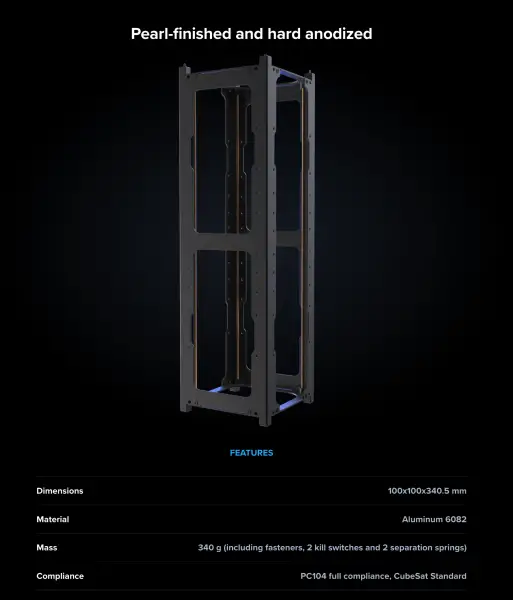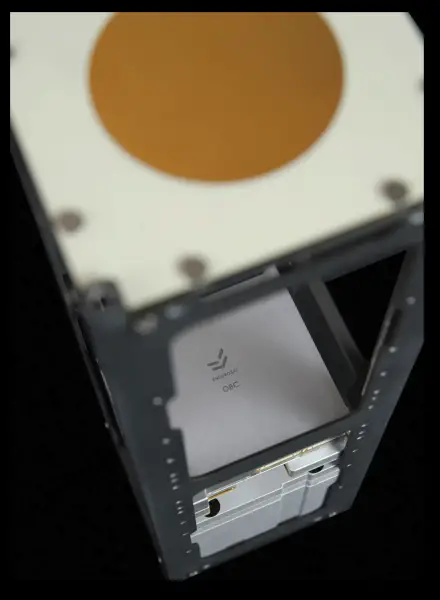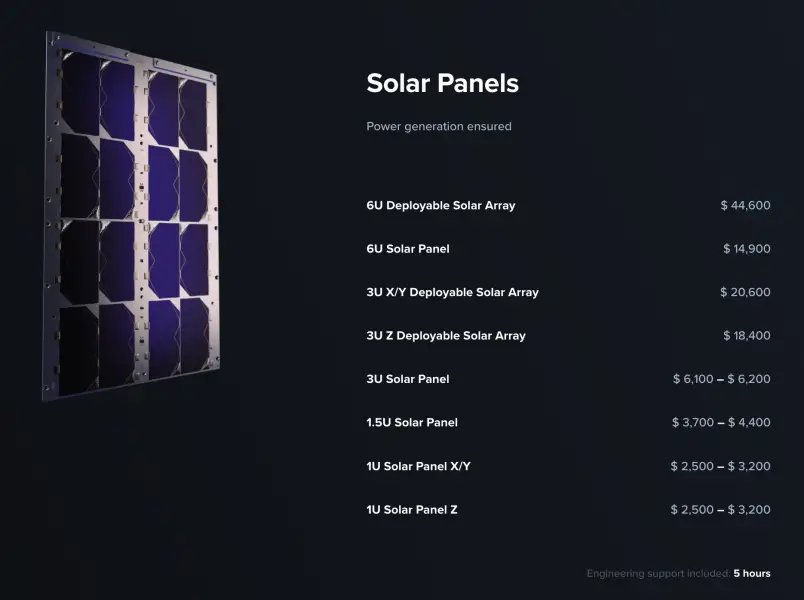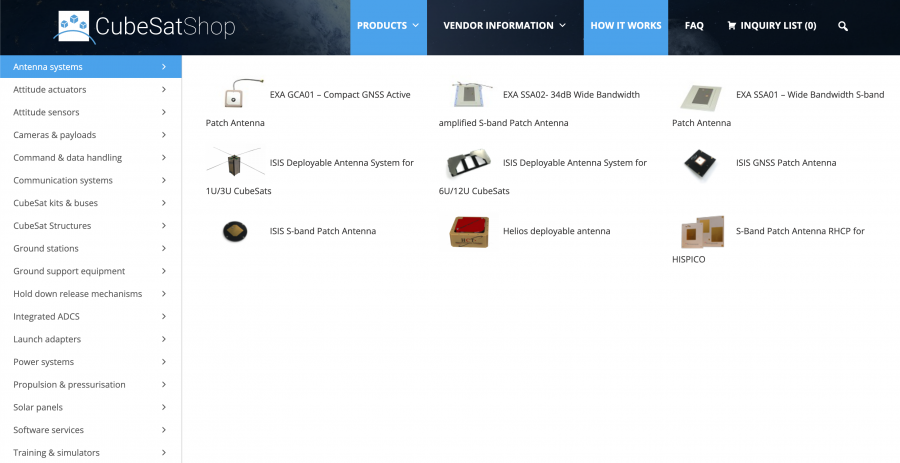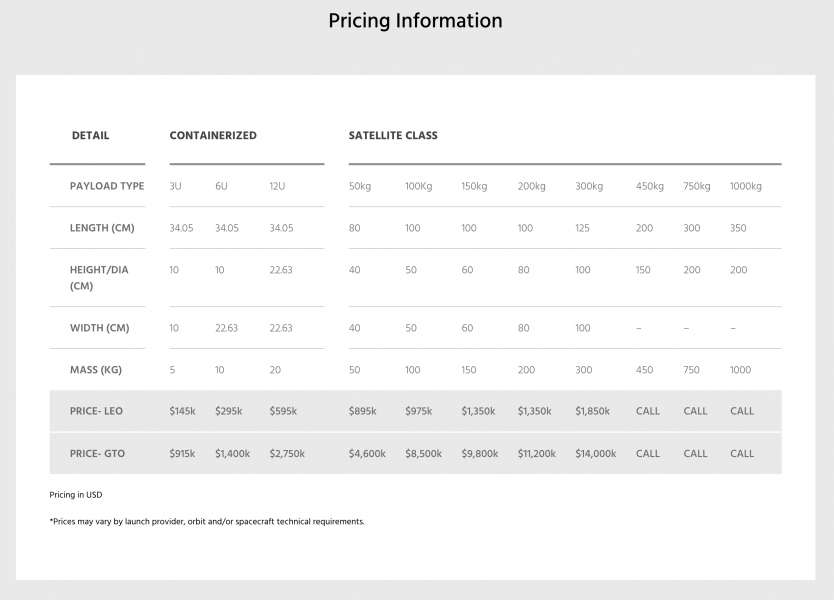The global space launch services market size was valued at $9.88 billion in 2019.
Projected by Allied Market Research to reach $32.41 billion by 2027, the industry grows at a CAGR of 15.7% from 2020 to 2027.
Weighing less than 10 kilograms, nanosatellites stand to miniaturize satellite technology, making a personal satellite accessible for less than half a million dollars.
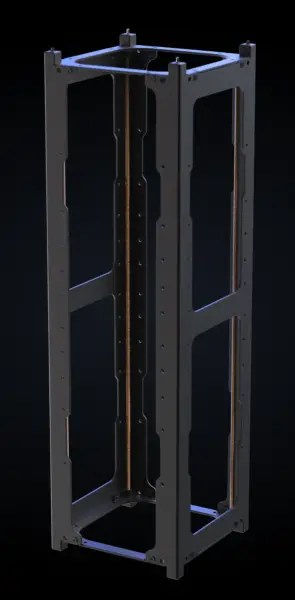
What are CubeSats?
A CubeSat is classified by NASA as a nanosatellite. Nanosatellites are satellites that weigh less than 10 kg (22 lbs). As a class of miniaturized satellites designed in 1999 by professors Jordi Puig-Suari and Bob Twiggs (of Cal Poly and Stanford respectively), CubeSats exist as new private satellite networks for academic, commercial, and governmental connectivity.
With over 2,080 nanosats forecasted to launch, that’s almost 6,000 tiny satellites orbiting in Earth’s Low Earth Orbit (LEO) by 2028.
CubeSats Dimensions
CubeSats are built to standard dimensions of 10 cm by 10 cm by 10 cm. Each Unit (U) is 100 cm³.
CubeSats can be
- one unit (1U),
- two units (2U),
- three units (3U),
- or six units (6U)
with an average weight of 1.33 kg (3 lbs) per unit. However, cutting-edge CubeSat frames weigh less than 1 pound!
Satellite Mass Classification
| Large satellites | >1,000 kg |
| Medium satellites | 500 – 1,000 kg |
| Small satellites | <500 kg |
| Minisatellites | 100 to 500 kg |
| Nanosatellites (CubeSats) | 1 to 10 kg |
| Picosatellites | 100 g – 1 kg |
| Femotsatellites | 10 g – 100 g |
| Attosatellites | 1 g – 10 g |
| Zeptosatellites | 0.1 g – 1 g |
Why would you want to send one into space?
The uses for a CubeSat range from academic research & commercial applications to heightened intelligence for governmental agencies.
If an entity wants to know how many cars show up at [x] location on any given day, that data is now available privately.
If a university wants to set up the first predictors of earthquakes for faster warning times, they can now launch a CubeSat to start analyzing hyperspectral imaging and electromagnetic signatures to track what patterns occur before earthquakes happen.
In financial markets, more accurate imaging offers a user key information on the activity of production; upon finding a lack of activity, one could theoretically short a seemingly successful company.

Academic Research
For professors Bob and Jordi, the logic was simple — build a smaller satellite that’d be cheaper to launch. With a smaller payload and faster construction time, the Russian Space Program had offered to study the feasibility of launching a CubeSat in 1999…with a price tag of $500,000,000. The first CubeSat was finally launched in 2003 with the goal of functioning as an early electromagnetic wave detector in predicting earthquakes.
The academic opportunities to conduct biological experiments without the impact of Earth’s gravity represent the next biggest leap in science since the Internet (Axiom Space, 2021). In the present day, with a cheaper pricing table (see below), some CubeSats have become countries’ first-ever satellites, launched by universities for academic research. Biological research payloads comprise the purpose behind many launches, with more planned in the coming six years. (NY Times, 2019).
Logistics
Initially, professors Jordi and Bob experimented with miniaturized satellites for Earth observation or accessing radio signals from Earth’s low orbit. In the present day, CubeSats are used for increased reliability in tracking your company’s maritime shipments globally.
Traditionally, all a ship has to do to vanish from modern tracking systems is disable its AIS (Automatic Identification System). Services such as Unseen Labs offer EM (electromagnetic) detection on a CubeSat network to create signatures for each ship, which are incredibly difficult to falsify. As a result, spacecraft technologies and extensive data have become accessible to companies that could not justify the feasibility and cost of a larger satellite.
Tracking Changes On Earth
With the best imaging known to man, hyperspectral imagery specifies the presence of invisible phenomena to companies and educational institutions alike.
“Building a Health Monitor for the Planet,” is Pixxel’s mission statement. Pixxel exists as a space data company providing solutions in hyperspectral imagery for higher spatial resolution imaging in the observation of our planet.
How do you get a CubeSat into space?
With such a wide range of capabilities from having your own satellite, the purpose of your satellite will determine its programming, payload requirements, design, and launch. If you have a massive payload, you would work directly with SpaceX or another leading launch provider, but for CubeSats and nanosatellites, one would arrange rideshare for their nanosatellite through a broker or launch service provider such as Exolaunch, who recently signed a payload contract with SpaceX.
A launch service provider is a payload broker for rocket launches. Launches allocate the main payload and extra space for secondary payload where these CubeSats will rideshare up into space. These slots are purchased by launch service providers and they broker your payload contract to get your satellite into space.
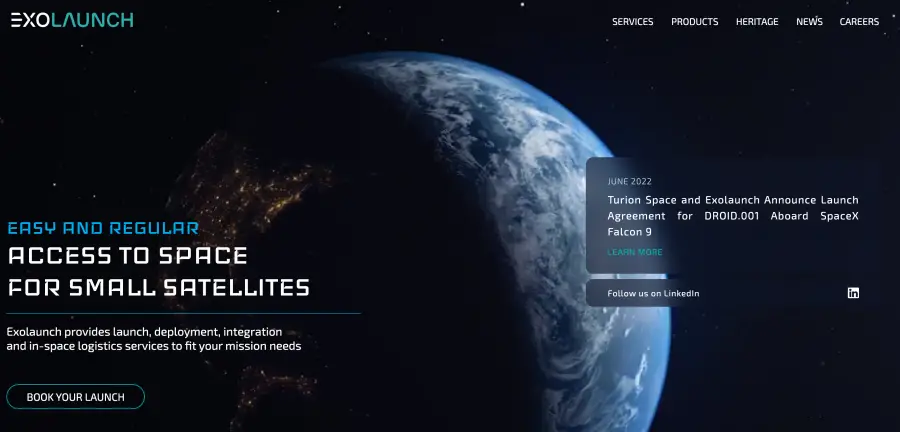
How to Build and Design a CubeSat?
A DIY CubeSat IS possible. The core components of a CubeSat are a lithium battery, a frame, solar panels, and a unit enabling network communications. Unfortunately, before a launch provider will even consider your DIY payload, they will want to make sure it undergoes extensive testing (which coincidentally, costs a ton of money). If you plan on sending a satellite into space it’s better to go with a company with expertise in designing and building cubesats.
Who Designs and Builds CubeSats?
There are several vendors that are willing to make your project become a reality. A $4,000 CAD file and datasheet from Endurosat represent the best starting point for building your nanosatellite. Similar to purchasing the blueprint of a custom-designed home, the pre-tested specifications included in the CAD file can be used to fabricate the satellite structure.
Once the frame meets space standards, the Cube Unit(s) are installed inside, with exterior framing. Finally, solar panels are fitted to the outside panels for long-term power needs.
What can you put in it?
A CubeSat essentially represents a Pandora’s Box of opportunities for add-ons. Not only can it serve as a time capsule in space, but it can also connect to networks with invaluable data. All sorts of sensors ranging from star tracking to long-range cameras can be installed inside of and on your CubeSat for purposes academic, commercial, and governmental.
ISIS, IQ Wireless, Pumpkin, Enpulsion, MicroSpace, Maryland Aerospace, and RUAG are companies selling CubeSat products on the CubeSat Shop (CubeSatShop FAQ, 2022).
How much does it cost?
A 3U CubeSat All-in-one Platform costs approximately $200,000 excluding support and launch services. Launch services run approximately $145,000 for a 3U CubeSat to be sent into space. Depending on the addons you chose for your nanosatellites, it’s possible to have access to space data with under half a million dollars, not including system testing/integration, in-orbit operations, and system maintenance.
Fee Breakdown of a 3U CubeSat
| Description | Category | Estimate |
| CAD file & Datasheet from Endurosat | Design | ~$4,100 |
| X-Band High-Speed Data Transmitter | Communication | ~$30,000 |
| X-Band 4×4 Patch Array | Antenna | ~$8,000 |
| Onboard Computer (OBC) | Computer | ~$10,000 |
| EPS II + Battery Pack | Power Module | ~$40,000 |
| 3U X/Y Deployable Solar Array | Solar Panel | ~$20,000 |
| CubeSat Structure | Satellite Frame | ~$4,000 |
| Assembly JIG | Ground Support Equipment | ~$4,000 |
| 3U Payload of five kilograms in Earth’s Low Orbit | Launch | ~$145,000 |
| Total Estimate to send a 5-kg 3U CubeSat to Low Orbit: | ~$265,000 |
Integrators Help You Handle Logistics
There are also integrators that handle everything from A-Z from design to launch. From on-orbit operations to subsystem manufacturing, integrators like Space Manic offer full satellite integration services to “shrink the time from order to on-orbit delivery within several months,” (Spacemanic.com, 2022)
The Summary
For half a million dollars or less, you can have a personal satellite.
Chose the number of CubeSats for your satellite platform: 1U, 2U, 3U, or 6U.
Select and customize your CubeSat subsystems manufacturing and conduct testing.
Once transportation to the great beyond is secured via rideshare, you’re counting down the days to launch and deployment.
Finally, tweak the on-orbit operations for the best uses of your CubeSat — who knows what new disruptive business industry you can create?
SpaceX offers Payload Space for Tiny Satellite Rideshare

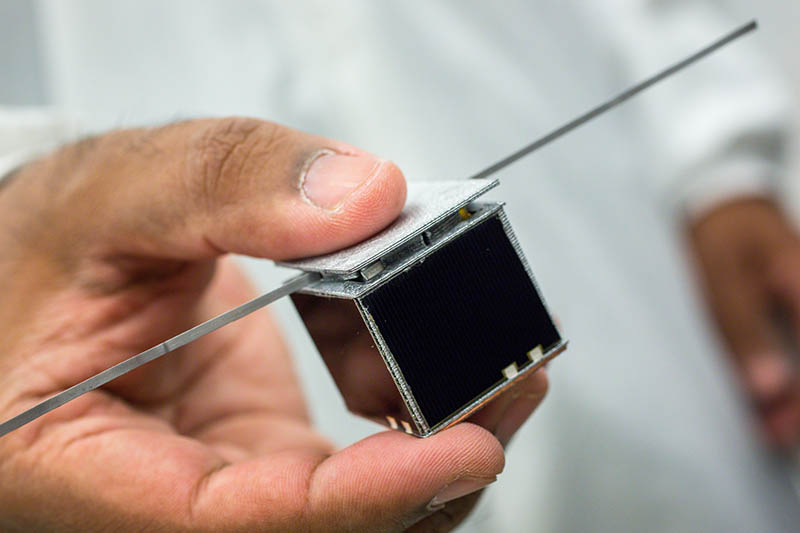
It all started as a university education program satellite. It was kind of funny. I didn’t think that people would criticize it as much as they did, but we got a lot of feedback, you know, “That’s the dumbest idea I’ve ever heard. Nobody’s going to use this toy.” We said, “Who the heck cares. We’ll go ahead and use it. We’re using it for education.”
A chat with Bob Twiggs by Stephen Clark, 2014, spaceflightnow.com
Resources
NASA CubeSat 101 | Interview with Bob Twiggs | NASA CubeSat Overview | CubeSat Structures | Unseen Labs | Omnispace Solutions | CubeSat Shop | CubeSat Shop FAQ | Spaceflight Pricing | CubeSat Launch Management Services – Space Manic | Mission Planning Guide PDF | NanoSats Database | ExoLaunch

